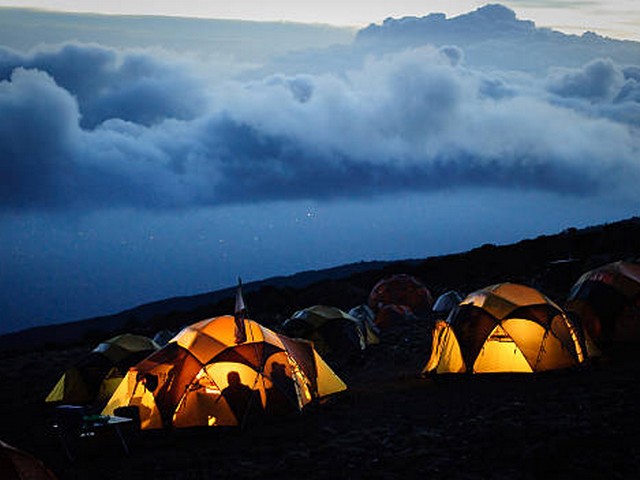Kilimanjaro Rainforest Wildlife Guide: A Journey Through Nature’s Wonderland
Welcome to the lush and vibrant world of the Kilimanjaro rainforest, a breathtaking ecosystem that blankets the lower slopes of Africa’s tallest peak. Here at Kilimanjaro Centre for Trekking and Ecotourism (KCTE), we’re passionate about introducing adventurers like you to the natural wonders and wildlife of this unique habitat. Our expert-guided treks not only promise spectacular views and physical challenge but also an up-close encounter with the diverse fauna thriving under the dense canopy of the Kilimanjaro rainforest.
Why Explore the Kilimanjaro Rainforest?
The journey to the summit of Mount Kilimanjaro is iconic, traversing through several climatic zones. The rainforest zone, however, holds a special place in the hearts of nature lovers. This lush, verdant section of the mountain is a critical ecosystem teeming with wildlife, offering trekkers a unique opportunity to experience biodiversity unlike anywhere else in the world.
The Kilimanjaro rainforest serves as the starting point for many climbers and is vital for the ecological health of the region. Exploring this dense forest not only heightens your climbing experience but also enhances your understanding of the mountain’s environmental importance.
Discover the Wildlife of Kilimanjaro’s Rainforest
Mammals Big and Small
As you begin your trek from the forest’s edge, keep your eyes peeled for some of Kilimanjaro’s most fascinating creatures. The elusive and beautiful Abbott’s duiker, a rare forest antelope, might be spotted amidst the underbrush. Blue monkeys and the black-and-white colobus monkeys are also stars of the show, swinging effortlessly between the ancient trees. Lesser known but equally intriguing are the nocturnal bushbabies, whose cries can sometimes be heard during night treks.
Birdwatching Paradise
For bird enthusiasts, the Kilimanjaro rainforest is nothing short of a paradise. Over 179 bird species flutter through this green haven, from the dazzling Hartlaub’s turaco to the tiny, elusive Kilimanjaro white-eye. Whether you’re a seasoned birder or a curious novice, the variety of species, each with its unique calls and colors, provides a delightful sensory experience.
Insects and Reptiles
Beyond mammals and birds, the forest floor and lower foliage teem with smaller, yet equally important inhabitants. Colorful butterflies, including the striking Kilimanjaro swallowtail, the endemic species to this mountain, flutter amidst the foliage. Reptiles, such as the three-horned chameleon, add to the biodiversity, showcasing the ecological richness of Kilimanjaro’s rainforest.
Flora: The Foundation of the Rainforest Ecosystem
Amidst the wildlife, the flora of Kilimanjaro’s rainforest deserves equal admiration. Giant ferns and towering fig trees create a canopy that regulates the temperature and moisture of this habitat, making it ideal for wildlife. The undergrowth is teeming with smaller plants, many of which are used by local communities for medicinal purposes.
Best Time to Visit and What to Expect
The rainforest zone of Kilimanjaro is accessible year-round, but the best wildlife viewing opportunities coincide with the drier seasons from June to October and from December to March. During these periods, the paths are less slippery, visibility is better, and wildlife is often easier to spot as they converge around water sources.
Preparing for Your Trek
When planning your trek through Kilimanjaro’s rainforest with KCTE, it’s essential to come prepared. Waterproof hiking gear is a must, as the rainforest can be wet even in the dry season. Binoculars will enhance your viewing of distant birds and mammals. Additionally, hiring a knowledgeable guide from KCTE can immensely enrich your experience, as they share insights about the wildlife and ensure you don’t miss out on hidden wonders.
Join Us at KCTE for an Unforgettable Adventure
At Kilimanjaro Centre for Trekking and Ecotourism, we’re dedicated to providing you with a transformative experience that connects you deeply with the natural world of Mount Kilimanjaro. Our expert guides are not only trained in safety and mountain knowledge but are also passionate about the biodiversity of the Kilimanjaro rainforest. Choose KCTE for your climb and become part of a journey that respects and celebrates the beauty of Africa’s highest peak.
Frequently Asked Questions (FAQs)
What wildlife can I see in the Kilimanjaro rainforest?
You can see a variety of wildlife, including colobus monkeys, blue monkeys, bushbabies, Abbott’s duiker, numerous bird species, butterflies, and chameleons.
How difficult is the trek through the Kilimanjaro rainforest?
The trek can vary from moderate to challenging based on the route and your fitness level. It’s advisable to prepare adequately with physical training and proper gear.
Can I visit the rainforest without climbing to the summit?
Yes, KCTE offers specialized wildlife tours that focus on exploring the rainforest without the obligation to summit. This is perfect for those particularly interested in wildlife and photography.
Is a guide necessary for exploring the Kilimanjaro rainforest?
While not mandatory, having a guide enhances your experience, ensuring your safety and providing valuable insights into the ecosystem’s flora and fauna.
As you contemplate your next adventure, consider diving into the heart of Kilimanjaro’s rainforest with us. Not only will you witness the majestic beauty of Mount Kilimanjaro, but you’ll also discover a vibrant ecosystem that’s teeming with life at every turn. Book your climb with Kilimanjaro Centre for Trekking and Ecotourism today and take the first step towards an unforgettable journey through nature’s wonderland.




